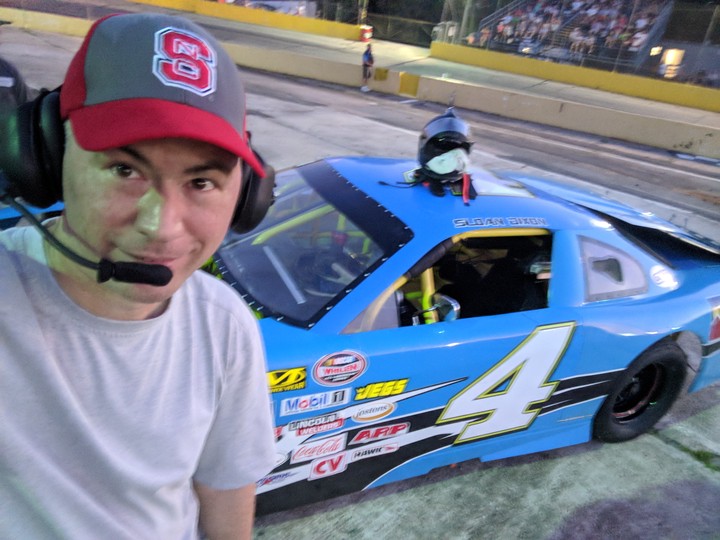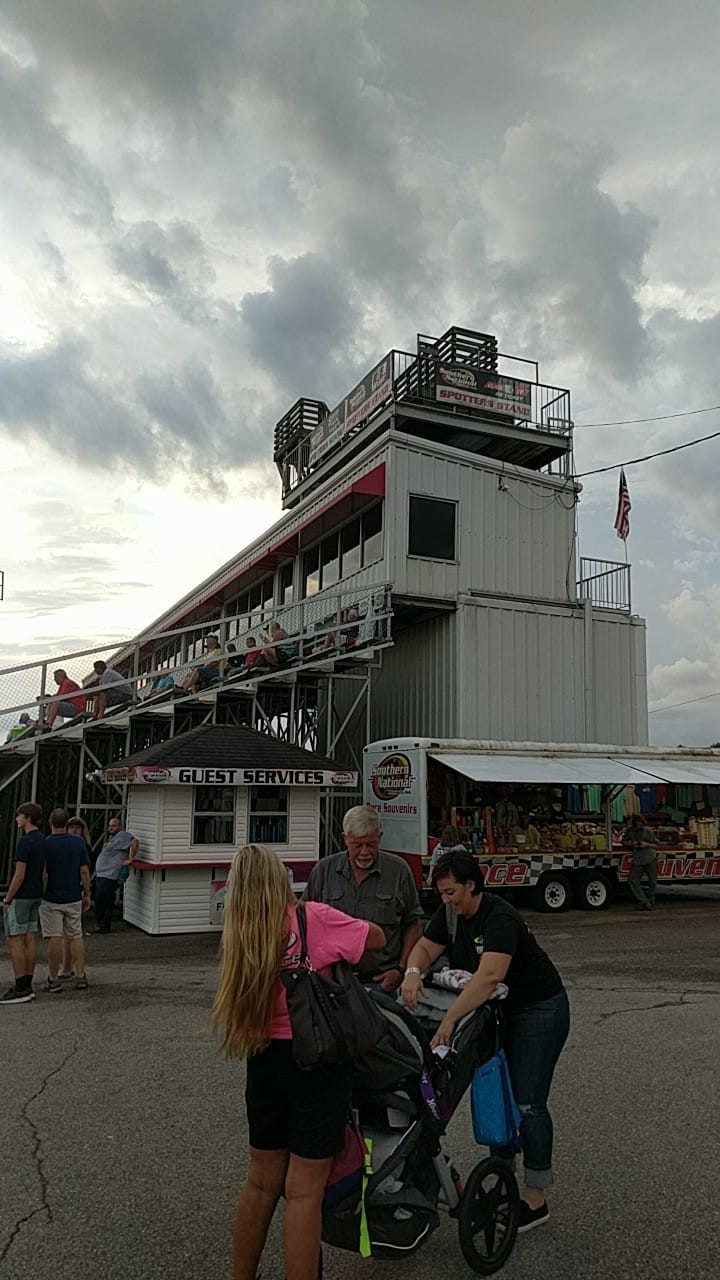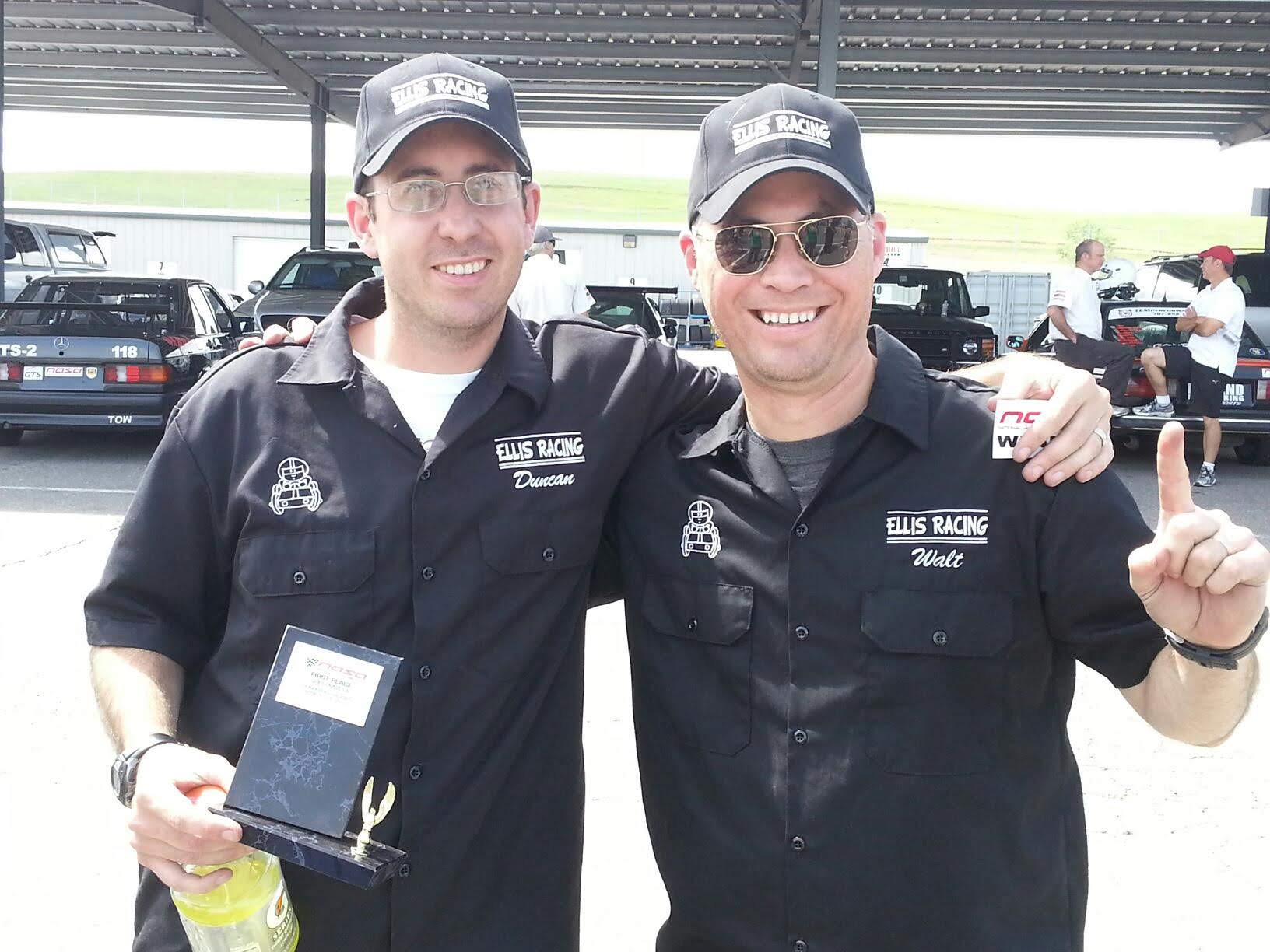What Do I Miss Most? Spotting
Spotting for Auto Racing
 Late Model car that I spotted for in 2018-2019
Late Model car that I spotted for in 2018-2019A popular question in 2020 and 2021 (pandemic years) is “What is it you miss the most?”. There are obvious answers like traveling internationally or being indoors for large events. Even though most folks that know me would guess that I miss going to conferences in person (and I do), the thing I really miss the most is hanging out at the race track and spotting.
For those of you not familiar with racing, most car racing series mandate many safety devices for drivers to wear. These devices restrict the driver’s ability to look around. Many drivers have mirrors and other devices to help them see blind spots and the space around the car. Also, as one might imagine, driving a high speeds with cars trying to pass you can take up a lot of the driver’s attention. Spotters help the driver by providing another set of eyes that are outside the car. The spotter is in radio contact with the driver and can convey important information to the driver.
The two types of racing that I have spotted for are road and oval racing.
Road Racing
This type of racing has cars racing around a course that is typically a mile or more in length and winds through a variety of elevations. The turns are both left and right, and course designs vary greatly. The major challenge for spotting at a road race is that it is not usually possible to see the entire course from one location. This fact can be overcome by using multiple spotters or the more likely scenario of one spotter positioning themselves to be able to observe a key location. The driver will not have the support of the spotter’s extra set of eyes.
Oval Racing

The racecourse is circular or close to circular in this type of racing. One spotter can see the entire course in this type of racing. In oval racing series, a spotter is mandated due to the number of cars on the track and the additional implications of having to enforce rules. The race official will be in the same location as the spotters and can easily relay the penalty or change in starting position to the spotter and then the spotter and relay that information on to the driver.
Where Do Spotters Work
Usually, the spotters are perched on the highest location at the track to get the best view. Sometimes these locations are just the top row of seats on the grandstands. At other tracks, spotters need to climb one or more ladders to reach a platform high above the racetrack. Probably not a good job for people afraid of heights.

Special Language

Since things happen very quickly on track with race cars going at breakneck speeds, communications between the spotter and driver must be concise. A special language is agreed upon for use in certain situations. For example, in oval racing, if the spotter were to say “inside door” then the driver would know that there was a car to their inside and that the front bumper of that car was at their own car’s door. After this car is either passed or passes my driver’s car then I would say “clear inside”. Then the driver would know that lane of the race track is available for use.
Connection to Analytics
The spotter knows a lot of data. Race situation, standings of all cars, how many laps are remaining, what the other cars are doing, weather conditions, and others. All of this data needs to be reduced to relevant information to pass to the driver. The driver also must be able to provide the spotter with data and any requests for information. Here is an example of how this plays out during a race:
There is an accident, and the driver is involved, and the car spins off the track. The driver communicates that the car is not damaged. The spotter communicates there is still plenty of time to make up positions and then tells the driver when there is an opening to safely reenter the track. After the driver is back on track, the driver can communicate any issues with the car. The spotter then starts feeding the driver the time gaps to the cars in front and behind the driver.
The time gaps are very important. The spotter and driver must work together to determine if the driver should push to gain time, maintain current position, or lose time. The data that is relevant for this trade-off decision is the time left in the race, condition of the tires, time gap to the cars ahead and behind, current position, and any other considerations that are outside of the current race. These conditions could be using the same set of tires for multiple future races.
Spotter Equipment
The most important piece of equipment is the radio. This is the piece of the kit that allows you to talk to the driver and the rest of the team. The next thing on the level of importance is the headset. Since the races are long and the environment may be really loud, headsets must be both comfortable and limit noise.
The next must-have piece of equipment is a cell phone with a racing app on it. Different tracks and series use different apps. The apps allow users to see the placement of all drivers and the time gaps between the drivers. It also provides the lap count and race time. These apps allow the spotter to provide a lot of important information to the driver, such as time gaps to the car in front or behind, how much time or how many laps are remaining in the race, place of a rival driver, and if the driver’s lap time is improving or getting longer.
Binoculars are nice to have in case the spotter needs to take a closer look at cars to identify damage or track conditions. Obviously, on smaller tracks, binoculars are not that important. If the track is a large road course and the spotter location allows for a good sightline, then binoculars are very important. Other equipment such as track maps to reference turn numbers at unfamiliar tracks, water bottle to stay hydrated, and environmental comfort items (hats, jacket, sunglasses, etc.) are useful when required.
Winning!
My first objective as a spotter is to keep my driver safe. The second objective is to provide relevant information at the right time to be competitive. And when all goes well, then this means winning. To be a good spotter, it takes time and practice. In the end, the effort is worth it.
